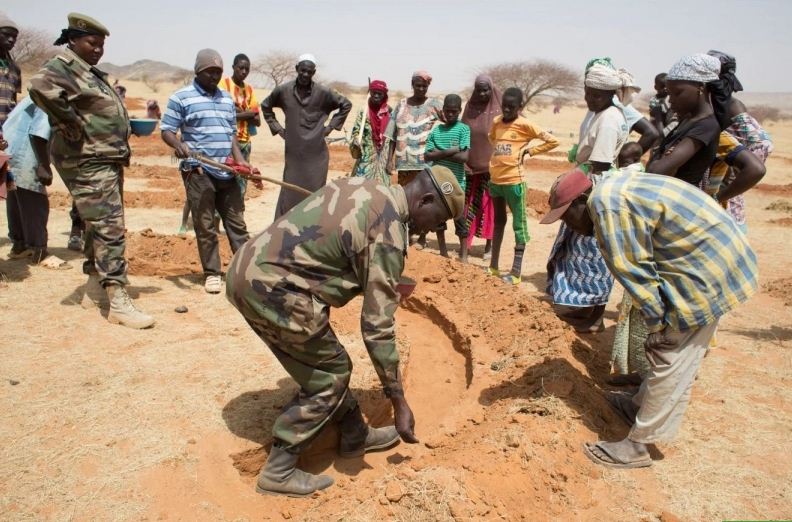The world’s biggest ecosystem restoration project

Dhaka, April 29, 2020: “Any threat to our environment is a threat to our health, our society, our ecosystems, our economy, our security, our well-being and our very survival,” says a ministerial declaration of the United Nations Environment Assembly.
In the post COVID-19 era, restoring degraded drylands across vast swathes of Africa could make a major contribution towards creating a healthier planet with healthier ecosystems.
The Great Green Wall is an African-led movement of epic proportions initiated in 2007 to green the entire width of Africa, a very dry region extending from Senegal to Djibouti.
The focus has since shifted to a more integrated approach including sustainable land use, livelihood and job creation, and peacebuilding.
Landscape degradation, climate change and rapidly increasing populations over the past 50 years are often major drivers of conflict. The Great Green Wall aims to bring people together, restore degraded land and promote sustainable development. It’s no longer simply about planting trees.
The Food and Agriculture Organization of the United Nations (FAO) has estimated that the core area of the Great Green Wall for the Sahara and the Sahel stands at 780 million hectares (more than two times bigger than India), 21 per cent of which includes restorable agro-sylvo-pastoral lands. Of this total, the United Nations and Member States agreed in September 2019 to restore 100 million hectares by 2030.
The Great Green Wall contributes to, or directly supports, 10 of the 17 Sustainable Development Goals, and has been endorsed by over 20 countries.
“Despite the COVID-19 crisis, the 2030 Agenda, the Sustainable Development Goals and the Paris Agreement on Climate Change still constitute our best, and only, global road map for the future,” says United Nations Environment Programme (UNEP) ecosystems expert Tim Christophersen.
“We must seize the opportunity of this crisis to strengthen our commitment to implement the 2030 Agenda and the 17 Sustainable Development Goals.”

Measuring the growth of seedlings in Burkina Faso. Photo by FAO/AAD
In 2010, the Pan-African Agency of the Great Green Wall was created to coordinate and monitor the initiative. Planning, coordination and implementation is supported by nationally designated agencies and units, rural communities and by several projects.
How are UNEP and FAO helping?
FAO has a country representation in each of the Great Green Wall countries and has been a longstanding technical partner of the initiative since its launch in 2007. And UNEP and other agencies operate many restoration projects along the entire Great Green Wall, funded by the Global Environment Facility and other donors.
The United Nations has been working with the African Union Commission, the Pan-African Agency of the Great Green Wall and member countries to define their national strategies and action plans (2010-2013), a regional harmonized strategy (2012), and to support implementation activities on the ground (2014-2020). FAO and UNEP are now planning another boost to the Great Green Wall in coming years: both agencies are leading the new UN Decade on Ecosystem Restoration 2021–2030.
“The Great Green Wall will be a flagship of the UN Decade, and we will work with the African Union and the countries and the UN system to bring coordinated support to this monumental effort. In the context of economic recovery over the next years, we will also help to create better conditions for private sector investments,” says Tim Christophersen.
“Specifically, the FAO’s Action Against Desertification programme, financially supported by the European Union, is designed to implement restoration activities on the ground in several countries,” says Moctar Sacande, FAO’s focal person for Africa’s Great Green Wall.

Direct sowing in a Great Green Wal plot in Burkina Faso. Photo by FAO/AAD
“Over 50,000 hectares of degraded agro-sylvo-pastoral lands in 10 countries were subsequently planted, with 110 diverse and well-adapted native species.
“FAO has devised a large-scale restoration model that brings plant science and propagation knowledge to rural communities, equipping them to mitigate, and adapt to, climate change. Lessons learned, and results from this successful approach, have been summarized in a practitioner manual Restoration in action against desertification,” he adds.

Demonstration of direct sowing with communities in Niger, which has made good progress in its section of the Great Green Wall.
Photo by FAO/AAD
UNEP’s role
UNEP has both its headquarters and its Africa Regional office in Nairobi and contributes to the programme, not least through environmental assessments and through its environmental networks and partners.
UNEP is already working on an analysis of environment-related risks to peace in the Sahel with field-based entities, including the UN Office for West Africa and the Sahel, the UN Multidimensional Integrated Stabilization Mission in Mali, the World Bank, UN Resident Coordinators, and the United Nations Development Programme.
This work, which combines analysis of environmental trends with field-based efforts to identify viable solutions, provides an important platform for highlighting how ecosystem restoration can promote environment, development, peace and security objectives.
“Many of the countries along the Wall’s path lack technical, financial and institutional capacities, and are unable to mobilize the necessary investments for effective large-scale restoration,” says Christophersen. “In the post-corona era we need unprecedented international cooperation, and the strengthening of existing partnerships with FAO and others, to speed up progress on the Great Green Wall.”
Read More
.
.

